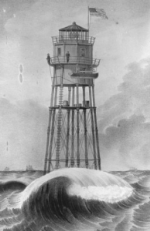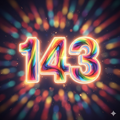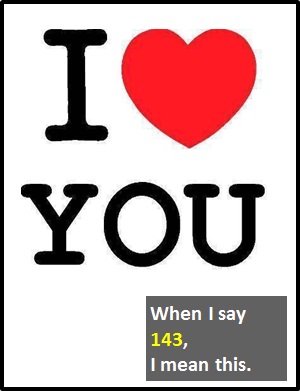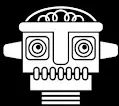What Does 143 Mean in a Text?
Meaning of 143
143 means "I love you."How Come?

143 is a numeronym that represents the phrase "I love you." It's because the numbers correspond to the number of letters in each word (1 = I, 4 = love, 3 = you). It's a sweet, old-school way of expressing affection, often used in early text messaging, on pagers, and in online chatrooms, before emojis became mainstream. In the late 1980s, many people carried text-enabled pagers, which were small handheld devices that could send and receive short text messages. Compiling a message on a pager was fiddly and the character count was brutally restrictive. As a result, users quickly invented "brevity codes" to save time and space. This was the first use of 143 in the "digital" era.
Who Uses 143?

Although 143 is seen less often nowadays, it still has its uses. It is still used nostalgically or playfully by older millennials and other early users of the internet who grew up with numeric texting codes. While using numbers in this way helps with brevity and can give messages an old school vibe, it also allows the sender to express their love without suffering the embarrassment of saying those "three magic words." This ensures 143 maintains a broader appeal among shy lovers of every generation 😊
The Origin of 143

According to popular belief1, the association of "143" with "I love you" is rooted back in 1894, when a new flashing lantern was installed in Minot's Ledge lighthouse off the coast of Massachusetts (near Boston Harbor). The lighthouse flash sequence was 1-4-3. Some years later (circa 1915), when Winfield Scott Thompson was the lighthouse keeper at Minot's Ledge, his wife told their children, who could see the lighthouse flashing at night, that it was the "I love you" flash. She told them it was their father's way of saying he loved them. The tale has proven so popular that the Minot's Ledge lighthouse is still nicknamed the "I Love You Lighthouse."
143 Is a Numeronym

When used like this, numbers like 143 are known as "numeronyms," which are abbreviations using numbers. Numeronyms are still quite popular in internet slang, despite the rise of emojis. Other common ways of expressing love with numbers include:
- 381 = I Love You (3 words, 8 letters, 1 meaning).
- 721 = Love You (7 letters, 2 words, 1 meaning).
- 831 = I Love You (8 letters, 3 words, 1 meaning).
- Toni: 143.
- Jo: 1422.
- Toni: I think you meant 1432 (I love you too.)
- Jo: No, I meant 1422 (I love me too!)
When You Can't Say it With Words...

...say it with numbers.
Video Summarizing 143
Check out our short video explaining how to use 143:Summary of Key Points
| 143 | |
|---|---|
| Definition: | I Love You |
| Type: | Numeronym |
| Guessability: |  3: Guessable (if you understand how numeronyms work, else it would be difficult to guess) |
| Typical Users: |  Adults and Teenagers |
More Ways of Expressing Love in a Text

There are over 100 novel ways to express love in a text message. Some of them were invented by the iKids (i.e., Millennials, Generation Z, and Generation A), making them just a few decades old, but many of them have been around for centuries. Check out our list of ways of saying "I love you."
Example of 143 Used in a Text
You might also like...
Help Us Improve Cyber Definitions
- Do you disagree with something on this page?
- Did you spot a typo?
- Do you know a slang term that we've missed?
Share This Page

If you like Cyber Definitions (or this page in particular), please link to it or share it with others. If you do, please tell us. It helps us a lot!
Create a QR Code

Use our handy widget to create a QR code for this page...or any page.
next up:
1432More Topics...
emoji library
(send a huge emoji)sex & dating terms
(fine-tune your search)spotting drug abuse
(protect loved ones)saying "I love you"
(learn new ways)encrypting messages
(get sneaky!)gaming terms
(chat like a gamer)spotting grooming
(protect loved ones)numbers in texting
(improve brevity)Spanish slang terms
(get "slangy" in Spanish)using special symbols
(find the codes)coronavirus terms
(remember covidiots)

